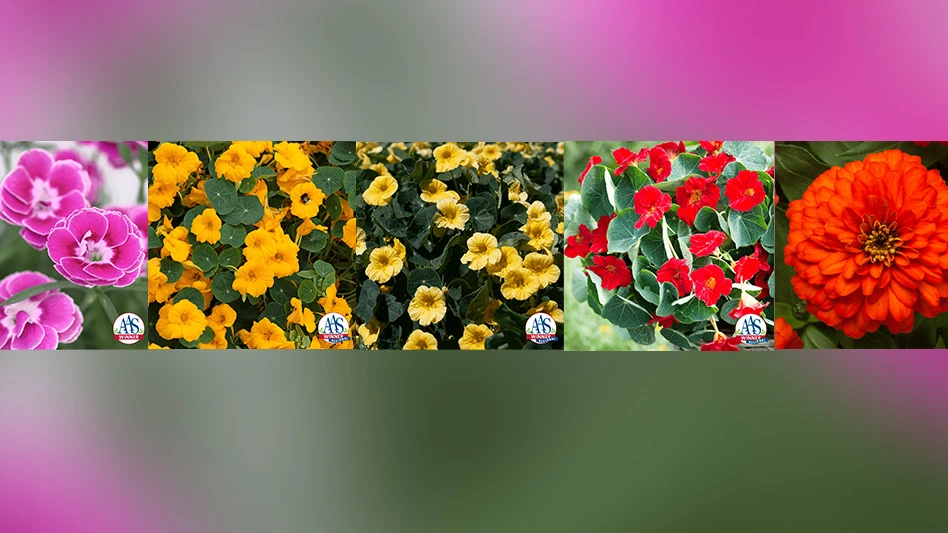 Greenhouse control systems can sometimes, but not always, be successfully interfaced with smart equipment.
Greenhouse control systems can sometimes, but not always, be successfully interfaced with smart equipment.
Greenhouse growers have a range of options for automated control. For smaller growers with relatively simple climate equipment control requirements, there are several brands of stand-alone controllers available. These systems do a good job of providing basic control, particularly in situations where it is not practical to invest in a more comprehensive control system or if the anticipated savings cannot be recovered in a reasonable time frame. They are purpose-built “islands of automation” designed specifically for horticulture and the control of standard equipment systems typically found in greenhouses.
At the other end of the spectrum, integrated control systems are available for larger operations and for more complex or comprehensive control applications. These systems can handle the kinds of interrelated control complexities that are common in the design of high-tech growing operations. Besides extended control capabilities, integrated systems also provide additional benefits such as central reporting, monitoring and alarms.
Where are controls headed?
When the first greenhouse control devices were invented, few if any foresaw the role that the silicon chip, personal computer or the Internet would have on the way business is conducted. Any speculation about the future must be tempered with the acknowledgement that we really don’t know what the next “game-changing” innovations will be. Nevertheless, in the absence of any revolutionary innovations, here are some of the things we anticipate as the greenhouse industry continues to mature.
Growers depend heavily on their control systems. In many instances these systems act as the first line of defense against a catastrophic failure. As control manufacturers refine their systems, there will be a continued emphasis on reliability and the ease of support.
Reduce input/output issues
The continuing fluctuation in energy prices is a reminder of how disruptive volatile input costs can be to business plans. Several emerging technologies offer the promise of reducing dependence on shrinking water supplies and fossil fuel sources. These include greenhouse designs that minimize water use, as well as alternate energy sources for heating, cooling and electricity.
On-farm energy alternatives such as wind, solar and biofuels are increasingly appealing as a means of reducing the risk of future supply restrictions or cost increases. Most of these technologies rely heavily upon control automation, coordination and integration with existing systems to maximize their benefit.
Smart vs. dumb equipment
Greenhouse control systems aren’t the only systems that have made advances. It is increasingly common to see so-called “smart” equipment being offered to the greenhouse industry. This is equipment that typically includes its own stand-alone controller or instrument package and various methods for accessing settings and other information.
Greenhouse control systems can sometimes, but not always, be successfully interfaced with smart equipment. Unless smart equipment is specifically designed for external control and monitoring, it can often be more expensive to integrate with a greenhouse control system than its “dumber” counterparts. In addition, simpler equipment is generally less expensive to purchase and maintain.
Some equipment, such as advanced watering booms, is often best left largely on its own. This equipment is already “smart”, so there is no need to provide the same functions through a central control system.
If you are evaluating smart equipment that will need to be interfaced with your greenhouse control system, be sure to involve the equipment supplier and your controls system vendor to ensure that the installation and operational requirements meet your expectations.
Better sensor technologies
Sensor and instrumentation technologies continue to improve. The cost for durable, high accuracy sensors suitable for horticulture is generally declining. There have been great strides in solid state temperature, humidity and moisture measurement. Greenhouse controls manufacturers will continue to take advantage of the latest sensor technologies as they become commercially available and economically practical.
As computer technology has advanced, more applications now have wireless alternatives including wireless options for accessing greenhouse control systems. Although wireless communications are generally more expensive and less reliable compared to wired alternatives, there is interest for greenhouse applications, particularly the use of wireless sensors. Wireless solutions are also promising when it comes to extending the reach of the greenhouse control system into associated field production applications.
Information management
Moving forward there will likely be more emphasis on data gathering, monitoring and performance auditing functions of greenhouse control systems. These higher levels of monitoring, control and management are consistent with the demands of increasingly sophisticated and efficient growers.
There is also an increasing demand for management information such as equipment operation records, sensor information, historical crop production records and feedback monitoring. Energy efficiency grants and subsidies increasingly look for proof of performance to support claims. For example, the Leadership in Energy and Environmental Design (LEED) certification system developed by the U.S. Green Building Council demands it and gives points for computer monitoring and control.
An integrated approach
Environmental control systems have traditionally been added after-the-fact. Usually once a greenhouse design and equipment have been selected, a control system was chosen. There is beginning to be a more integrated approach when it comes to designing structures and selecting equipment. This approach relies much more on the capabilities of the greenhouse control system to make it all work.
While there is still much to be done in regards to integration, forward-thinking growers and greenhouse engineers are planning for automated control in their designs. It’s also important to remember that these control systems aren’t just for controlling high-tech facilities. Greenhouse systems designers can often select simpler, less expensive equipment provided they can take advantage of the advanced control strategies available in a greenhouse control system.
David Flood is greenhouse horticulture consultant, Flood Technical Services, (604) 414-0695; dflood@twincomm.ca. Alec Mackenzie is director research and development, Argus Control Systems Ltd., and director of the Education Committee of National Greenhouse Manufacturers Association, (800) 667-2090; www.arguscontrols.com.

Explore the July 2010 Issue
Check out more from this issue and find your next story to read.
Latest from Greenhouse Management
- Meet the Next Gen: Gabriella Blair, Star Roses and Plants
- Leading Women of Horticulture: Katie Dubow, Garden Media Group, and Aubry Field, Lizzy Blossom
- Showing up at your horticulture business as your whole self
- Leading women of Greenhouse Management
- USDA fires experts on invasive pests, including Asian citrus psyllid, chilli thrips
- Farwest Show calls for 2025 New Varieties Showcase entries
- Leading Women of Horticulture: Arden Pontasch, North Creek Nurseries
- Leading Women of Horticulture: Emily Showalter, Willoway Nurseries






